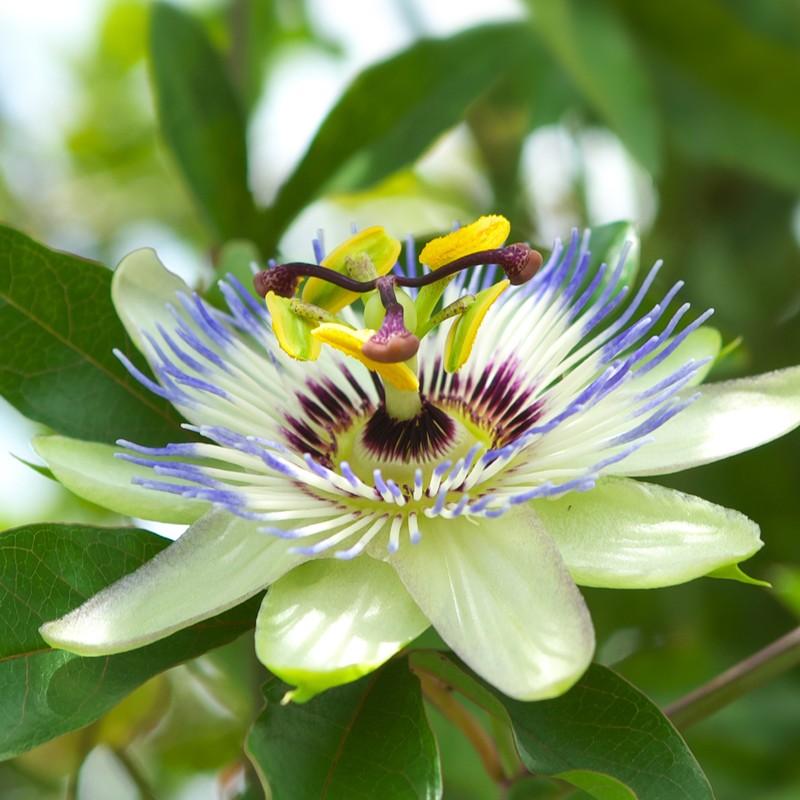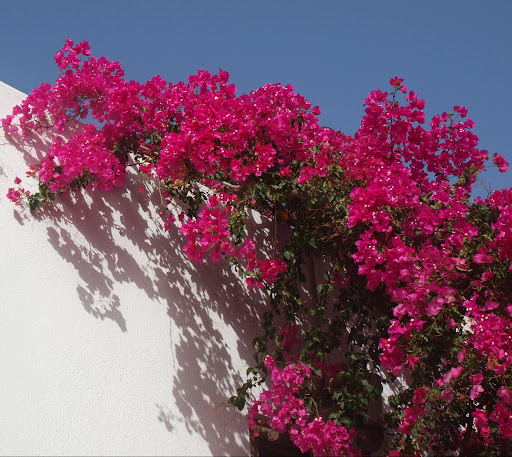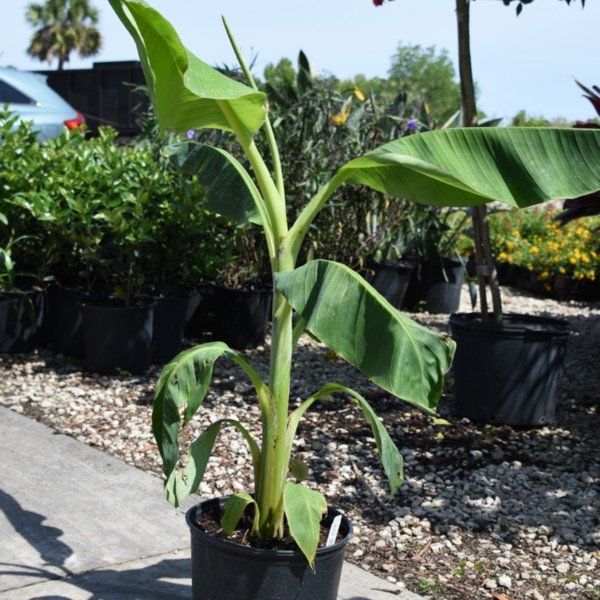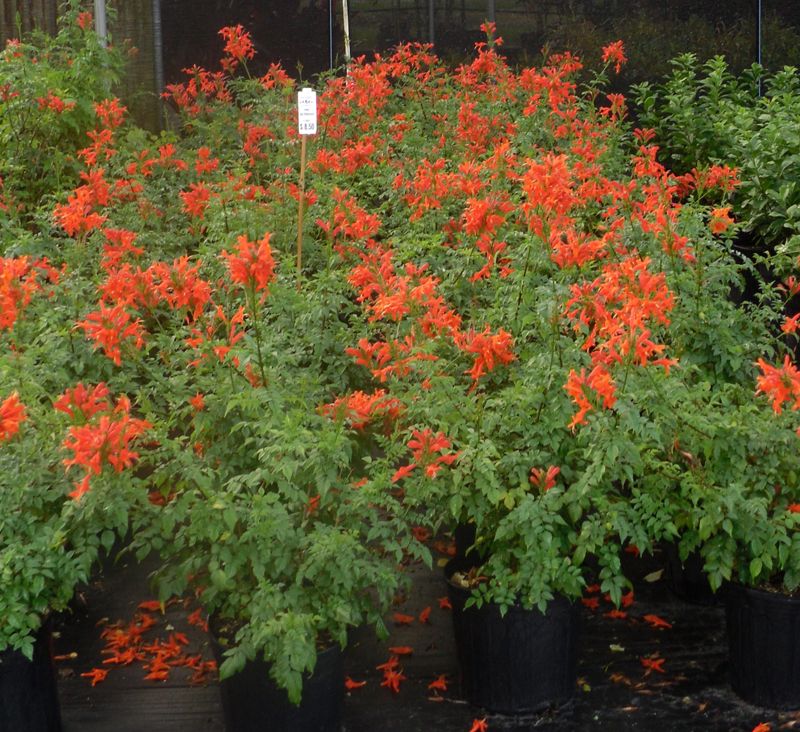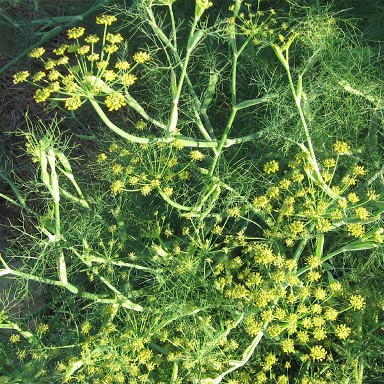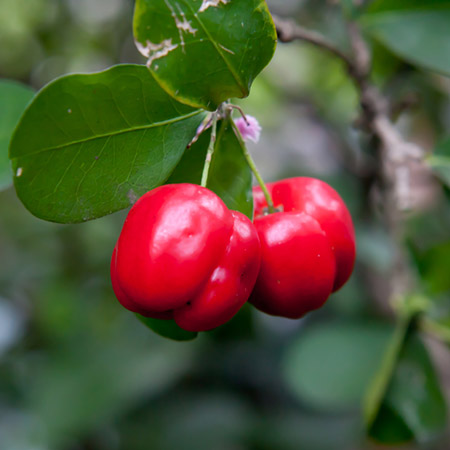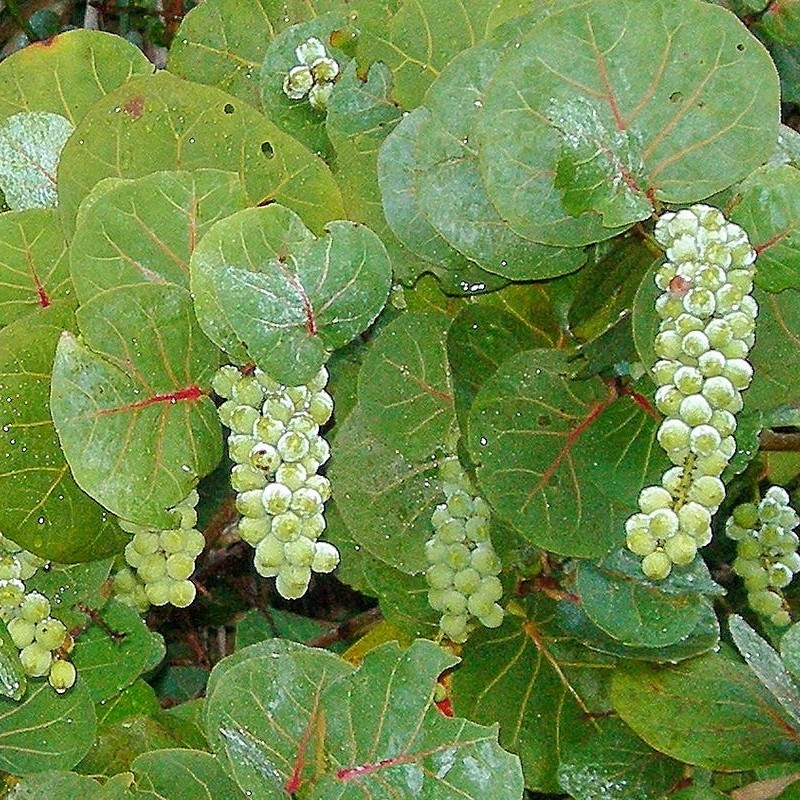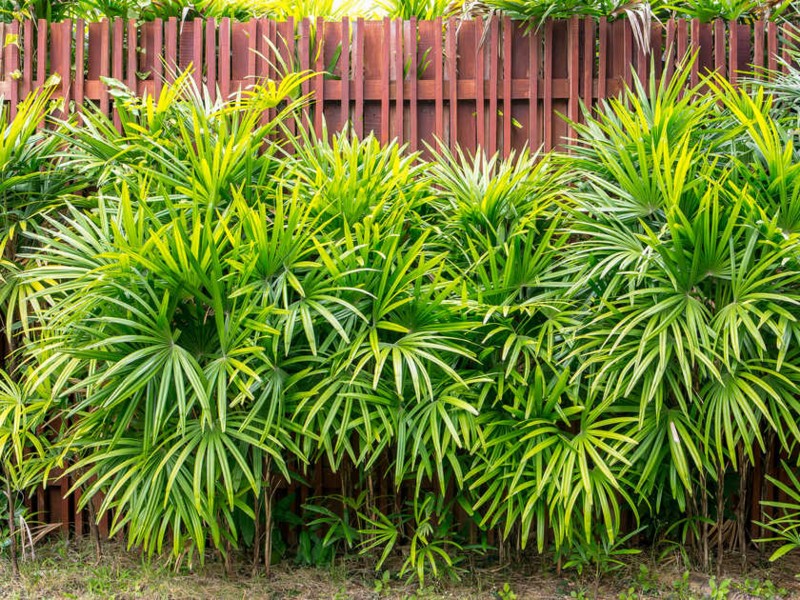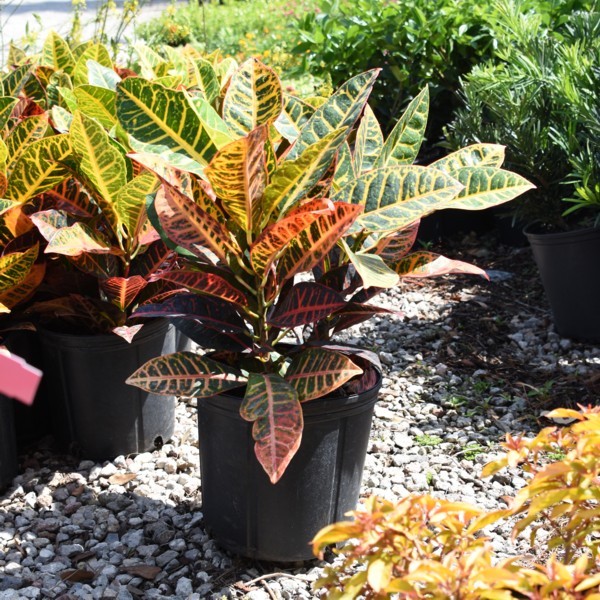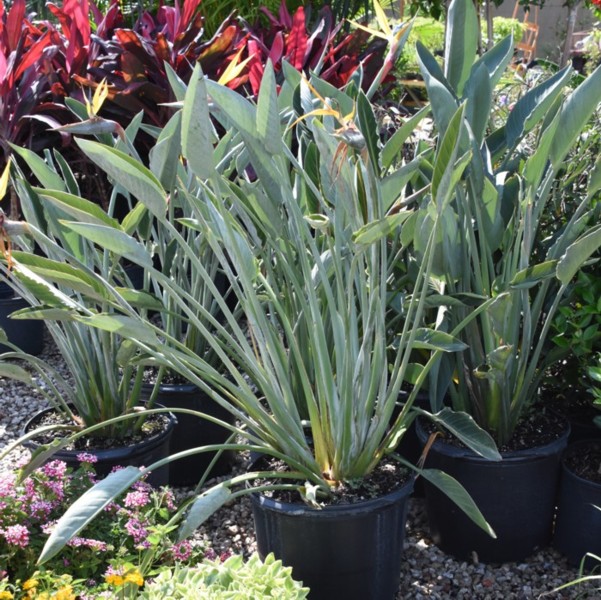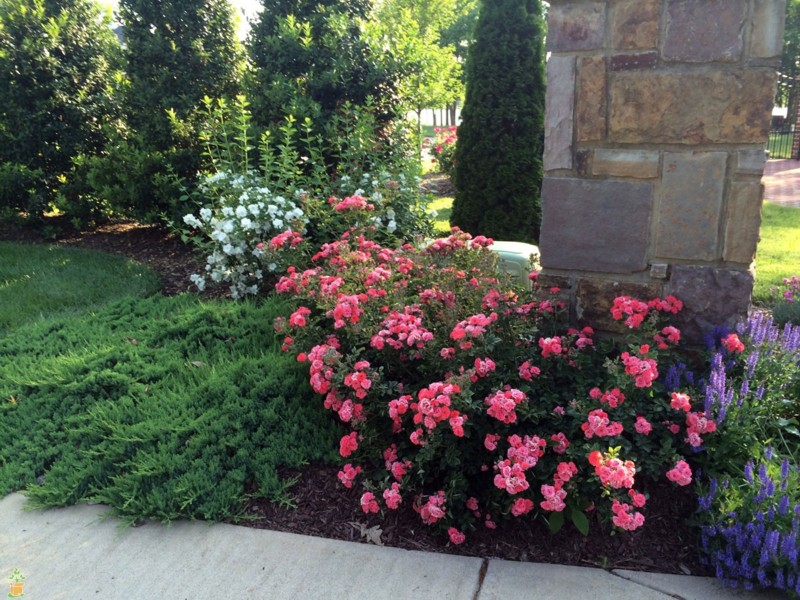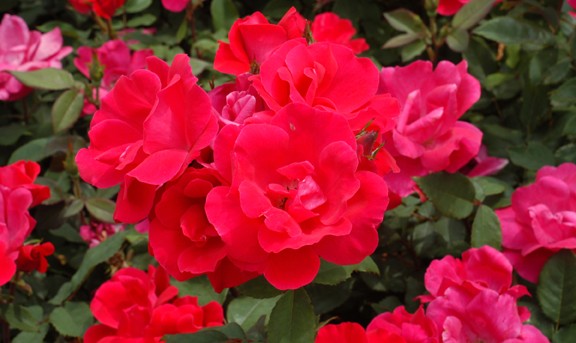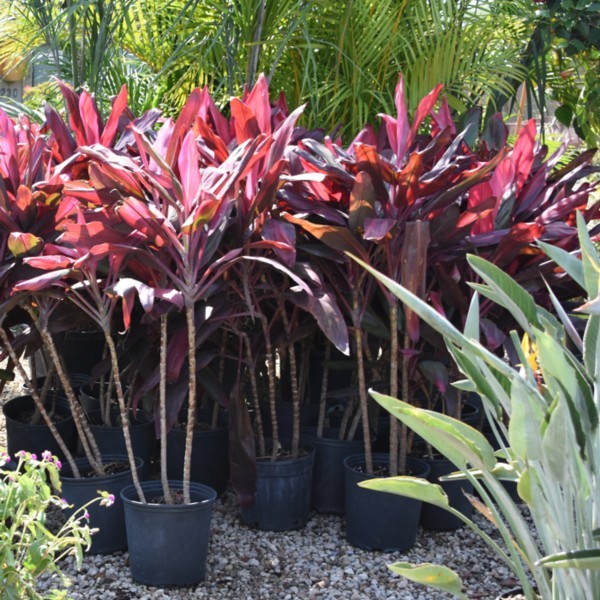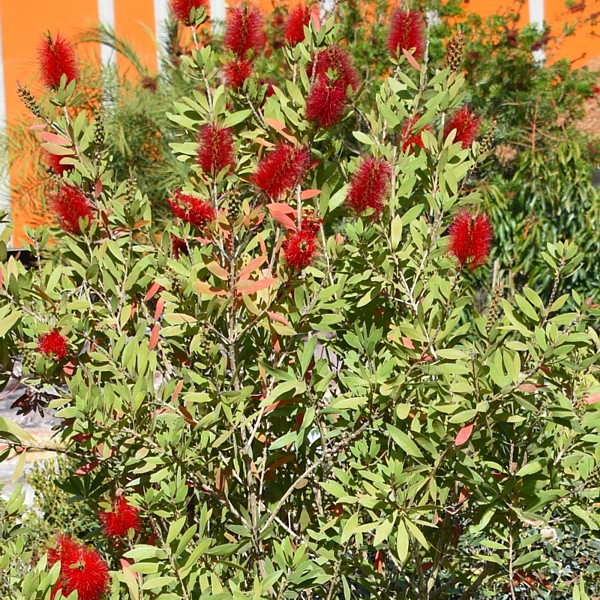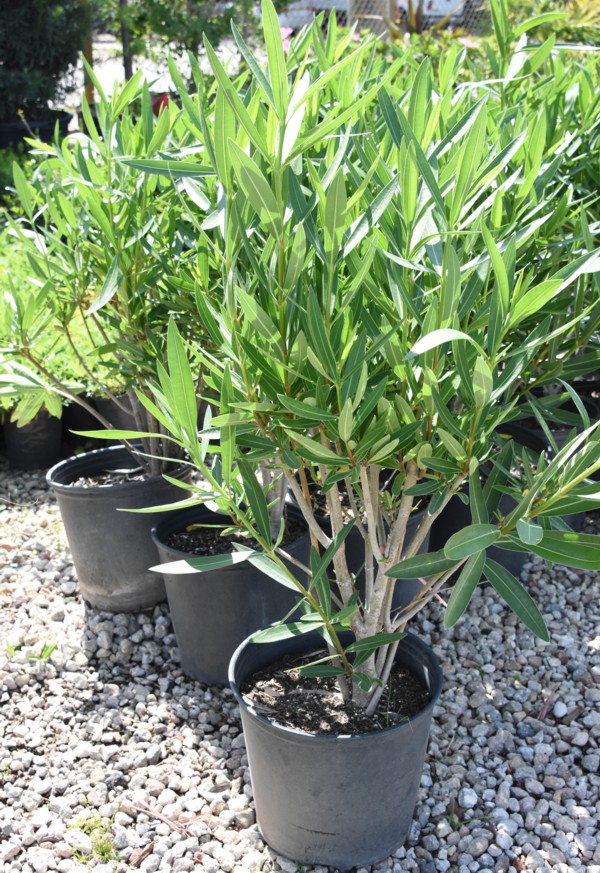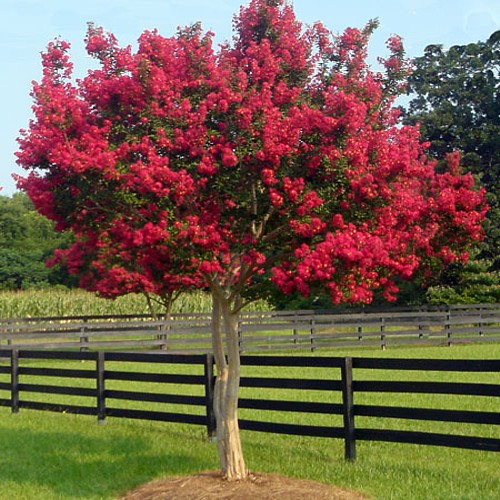Top 20 Bestsellers
READ THIS FIRST!!
This is a general list of plants we try to keep in stock. Actual availability fluctuates. Call for
current availability. We can deliver all our products, including plants, and even install it for you. Please come to our Garden Center or give us a call at (904) 727-1100 for more information. We can't wait to see you!
Passion Vine
*Most species of passion flower should be grown in full sun to part shade, in average soil that is well drained.
*To protect borderline plants during winter, stop feeding in late summer. Mulch the area around the roots, once the soil temperature drops, to prevent freezing and thawing throughout winter.
Bougainvillea
*Bougainvillea requires a fair amount of water and high-fertility soil.
*The bracts can be seen in all shades of pink and purple, and also red, yellow, white, salmon and orange.
Dwarf Cavendish Banana
*Tree matures around 8-10 feet tall but can be kept smaller in containers.
*Plants will lose purple splotching in the leaves with maturity. Heat-tolerant. Harvest approx. 4-6 months after fruit develops.
Cape Honey Suckle
*This tropical flowering shrub (which is often grown as a container-garden plant in the North) flowers on and off all year long, producing flamboyant clusters of bold red, orange, or yellow flowers that are irresistible to hummingbirds.
*Most homeowners grow it in bush form and it looks best when left to grow wide with a natural shape rather than manicured with hedge trimmers.
Milkweed
*Milkweed produces purple or pink flowers arranged in drooping clusters. Milkweed blooms from June to August and produces large quantities of nectar which attracts butterflies, moths and bees, responsible for the pollination of this plant.
*Caterpillars of monarch butterfly eat leaves of milkweed and collect toxins in the body. Toxins remain in the body after transformation of caterpillars into the butterflies and provide protection from birds and other predators.
Anise
Anise is a slow-growing annual herb of the parsley family (Apiaceae, formerly Umbelliferae).
* Plant Florida anise in shade to partial shade in well-drained, moist, acid soil. ... In a mixed shrub border, allow about 15 feet between Florida anise and other shrubs to maintain the individuality of each specimen. Florida anise fits well into naturalistic landscapes in damp, shady areas.
Barbados Cherry
*Whether it's grown in the ground among other fruit trees in your garden or in a container on the patio, the Barbados Cherry Tree will provide tons of delicious cherries each growing season and in just one or two years.
*Reaching a mature height of just 12 feet, the Barbados' convenient size and hardiness place it among the most adaptable cherry trees available. It's totally diverse, perfect for placing in a container or cropping into a decorative, productive shrub.
Sea Grapes
*The leathery leaves grow 8 to 10 inches in diameter, with a hint of red. They have red veining, new growth has a bronzy-red tint, and some leaves will turn completely red in winter before they fall off.
*In late summer female shrubs produce clusters of fruit that resemble grapes (hence the plant's name) that start out green and ripen to purple.When ripe, the fruit is very sweet, providing tasty treats for people, birds and squirrels. You can make a delicious jelly or wine from them as well.There is no way to tell if you're buying a male or female plant. And the female sea grape needs a nearby male to cross-pollinate and bear fruit. You may want to purchase several plants to increase your chances of getting grapes.
Lady Palms
*The lady grows slowly to an ultimate height of about 8 to 10 feet. Sun or shade is fine, though in a shady spot, the fronds keep their best deep green color. These palms are moderately salt-tolerant as well.
*Fertilize during the warmer months of spring, summer and fall, at least once per season.Plant with organic peat moss or top soil added to the hole. Water regularly...this palm can suffer damage from going too dry over long periods, though it doesn't like "wet feet."
Crotons
*Crotons are tropical plants that thrive outdoors in warm temperate areas. Plants can be pruned hard in early spring, before new growth begins to stimulate branching and new growth if they get leggy.
*These plants have moderate water needs and should be watered only when the top half-inch to an inch of soil dries out. Reduce watering in the winter. Plants will drop leaves if they are too wet or too dry for extended periods. As a tropical plant, it does best with moderate to high humidity and warm temperatures.
Birds of Paradise
*It can be pruned into a standard, but is also grown along fence lines, on walls, in containers and hanging baskets, and as a hedge or an accent plant. Its long arching thorny branches bear heart-shaped leaves and masses of papery bracts in white, pink, orange, purple, and burgundy.
*Bougainvillea needs at least 6 hours of full sun a day to flower profusely and look its best. This plant loves the heat too. No enough sun = not enough color. If you live where it's borderline zones hardy (see zones below), planting a bougainvillea against a warm wall will help.
Drift Roses
Drift Roses are a cross between a ground cover rose and a miniature rose-bush. They are very compact to the ground and will only get about 2 feet tall and about 3 feet wide. The Drift Series was bred by Star Roses and Plants to be a low maintenance ground cover rose. They will survive in hardiness growing zones of 5-10.
* Superior Disease and Insect Resistant - They do not require any spraying.
Knock Out Roses
*Knock Out roses are known for their easy care, extended blooming season with repeat flowering, and increased disease resistance when compared to traditional tea roses. These fast-growing, compact, deciduous shrubs can be grown singly or in groups.
*Bloom cycle every five to six weeks.
Cordyline
*Make sure the plant has evenly moist soil and partial shade to full sun. Bright light brings out the brightest colors in the foliage.
*Provide ti with approximately 1 inch of water every week that it doesn't rain, as the plant grows naturally in areas with high rainfall. Although the ti plant is moderately drought-tolerant, don't allow the soil to become bone-dry, as excessively dry soil may cause the leaf tips to turn brown.
Bottle Brush
*Bottlebrush plants get their name from their bristly red flowers that look like a traditional bottle brush. They're popular desert perennials (you need to plant them only once) because they're colorful, inexpensive, low care, drought-resistant, and readily available.
*Bottlebrush plants produce the most flowers when planted in full sun. They will tolerate partial shade, but they likely won't produce flowers if planted in full shade.
Oleander
*Oleander plants (Nerium oleander) are among the most versatile of shrubs, with dozens of uses in southern and coastal landscapes. They tolerate a wide range of conditions, including difficult soil, salt spray, high pH, severe pruning, reflected heat from pavements and walls, and drought.
*Oleander care is easy and this makes the shrub popular with highway departments. You'll often see masses of oleander shrubs planted in highway beautification projects where they provide an outstanding display of long-lasting flowers with very little maintenance.
Crape Myrtle
* The common crapemyrtle is a deciduous, small to medium sized shrub or small tree with a variable, moderately dense habit, often multi-stemmed form. The showy pink flowers have wrinkled petals like crepe paper. The foliage is dark green changing in fall to yellows, oranges, and reds.
* Crepe myrtle trees should be planted in a sunny location. Soil need not be rich or amended; crepe myrtle trees are adaptable to most soils except those that are soggy. Sunlight and well-draining soil afford a wealth of summer blooms and help keep pests away.
Hibiscus
* Growing hibiscus is an easy way to add a tropical flair to your garden. When you know how to care for hibiscus plants, you will be rewarded with many years of lovely flowers.
*Although warm, humid conditions are ideal for tropical hibiscus, you may want to provide a little afternoon shade when it's overly hot.
Herbs and Citrus
* Herbs are small plants that have a fleshy or juicy stem when they are young. The stems of some herbs develop hard, woody tissue when they grow old. Most herbs are perennials. This means that the tops of the plants die each growing season, but the roots remain alive and produce new plants year after year.
* Most citrus varieties are self-fertile, so only one tree is needed for fruit production. On average, fruit bearing begins when the trees are between 3 and 6 years old; however, exact timing will depend on the type of citrus (lemons, oranges, grapefruit, etc.), the cultivar, your climate, the health of the plant and its care, and other factors. Flowering is not seasonal, but occurs during warm weather and regular rainfall. Flowers and fruits may coincide.
